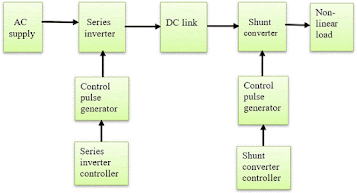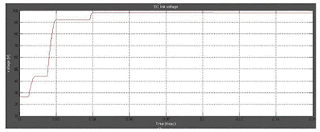ABSTRACT:
A
novel multilevel inverter based on a three-level half bridge is proposed for
the DC/AC applications. For each power cell, only one DC power source is needed
and five-level output AC voltage is realized. The inverter consists of two
parts, the three-level half bridge, and the voltage vector selector, and each
part consists of the four MOSFETs. Both positive and negative voltage levels
are generated at the output, thus, no extra H bridges are needed. The switches
of the three-level half bridge are connected in series, and the output voltages
are (Vo, Vo/2, and 0). The voltage vector selector is used to
output minus voltages (Vo
and
Vo/2)
by different conducting states. With complementary working models, the voltages
of the two input capacitors are balanced. Besides, the power cell is able to be
cascaded for more voltage levels and for higher power purpose. The control
algorithm and two output strategies adopted in the proposed inverter are
introduced, and the effectiveness is verified by simulation and experimental
results.
KEYWORDS:
1. Bridge
circuits
2. DC-AC
power converters
3. Modular
multilevel converters
4. Pulse
width modulation converters
5. Voltage
control
SOFTWARE: MATLAB/SIMULINK
Figure 1. The proposed hybrid ZVS bidirectional DC/AC inverter topology.
Figure 2. Waveforms with LFF strategy.
Figure 3. Waveforms with HFSPWM strategy.
Figure 4. Voltages of input capacitors C1 and C2.
REFERENCES:
[1]
A. Jahid, M. K. H. Monju, M. E. Hossain, and M. F. Hossain, ``Renewable energy
assisted cost aware sustainable off-grid base stations with energy cooperation,''
IEEE Access, vol. 6, pp. 60900_60920, Oct. 2018.
[2]
S. Xie, W. Zhong, K. Xie, R. Yu, and Y. Zhang, ``Fair energy scheduling for
vehicle-to-grid networks using adaptive dynamic programming,'' IEEE Trans.
Neural Netw. Learn. Syst., vol. 27, no. 8, pp. 1697_1707, Aug. 2016.
[3]
A. Garcia-Bediaga, I. Villar, A. Rujas, and L. Mir, ``DAB modulation schema
with extended ZVS region for applications with wide input/output voltage,'' IET
Power Electron., vol. 11, no. 13, pp. 2109_2116, Nov. 2018.
[4]
G. Xu, D. Sha, Y. Xu, and X. Liao, ``Hybrid-bridge-based DAB converter with
voltage match control for wide voltage conversion gain application,'' IEEE
Trans. Power Electron., vol. 33, no. 2, pp. 1378_1388, Feb. 2017.
[5]
Y. Cho, W. Cha, J. Kwon, and B. Kwon, ``High-efficiency bidirectional DAB
inverter using a novel hybrid modulation for stand-alone power generating
system with low input voltage,'' IEEE Trans. Power Electron., vol. 31,
no. 6, pp. 4138_4147, Jun. 2015.

































